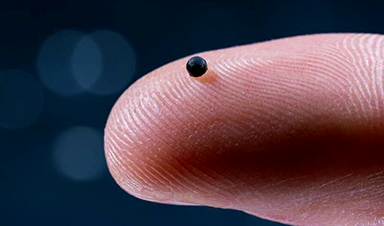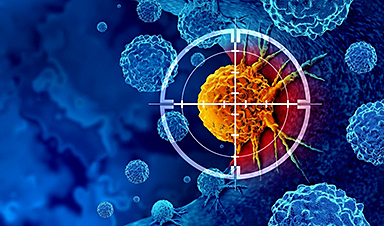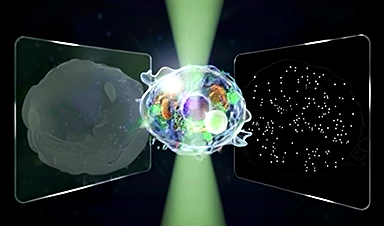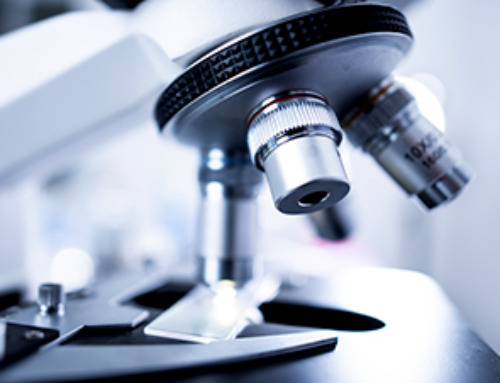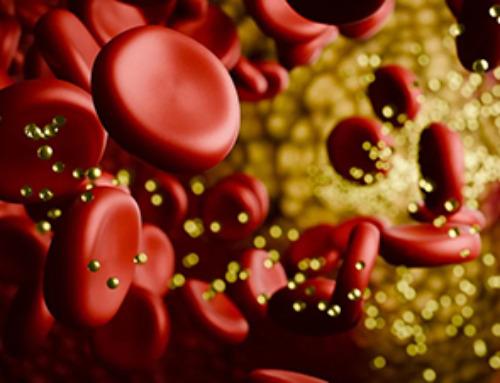Artificially intelligent software has been developed to enhance medical treatments that use jets of electrified gas known as plasma. The computer code predicts the chemicals emitted by plasma devices, which can be used to treat cancer, promote healthy tissue growth and sterilize surfaces.
The plasma studied in the experiments is known as cold atmospheric plasma (CAP). When the CAP jet is turned on, numerous chemical species in the plasma take part in thousands of reactions. These chemicals modify the cells undergoing treatment in different ways, depending on the chemical composition of the jet. While scientists know that CAPs can be used to kill cancer cells, treat wounds and kill bacteria on food, it’s not fully understood why.
“This research is a step toward gaining a deeper understanding of how and why CAP jets work and could also one day be used to refine their use,” said Yevgeny Raitses, a managing principal research physicist at the U.S. Department of Energy’s Princeton Plasma Physics Laboratory (PPPL).
The project was completed by the Princeton Collaborative Low Temperature Plasma Research Facility (PCRF), a collaboration between researchers at PPPL and the George Washington University (GWU).
PPPL has a growing body of work that combines its 70 years of pioneering plasma research with its expertise in AI to solve societal problems. The Lab’s mission extends beyond using plasma to generate fusion power to its use in fields such as medicine and manufacturing, among others.
The software uses an approach known as a physics-informed neural network (PINN). In a PINN, data is organized into parts called nodes and neurons. The flow of the data mimics the way information is processed in the human brain. Laws of physics are also added to the code.
“Knowing what comes out of the jet is very important. Knowing what comes out accurately is very difficult,” said Sophia Gershman, a lead PPPL research engineer from the PCRF who worked on this collaborative project. The process would require several different devices to collect different kinds of information about the jet.
“In practical studies, it is difficult to go and utilize all of the various technologically advanced diagnostics all at once for each device and for various types of surfaces that we treat,” Gershman explained.
Calculating the chemical composition one nanosecond at a time
Li Lin, a research scientist from GWU and the paper’s primary author, said it’s also difficult to calculate the chemicals in a CAP jet because the interactions need to be considered a nanosecond at a time.
“When you consider that the device is in operation for several minutes, the number of calculations makes the problem more than simply computationally intensive. It’s practically impossible,” Lin said. “Machine learning allows you to bypass the complicated part.”
The project began with a small set of real-world data that was gathered using a technique known as Fourier-transform infrared absorption spectroscopy. The researchers used that small dataset to create a broader set of data. That data was then used to train the neural network using an evolutionary algorithm, which is a type of computer code inspired by nature that searches for the best answers using a survival-of-the-fittest approach.
Several successive batches of data are generated using slightly different approaches, and only the best datasets from each round are carried through to the next round of training until the desired results are achieved.
Ultimately, the team was able to accurately calculate the chemical concentrations, gas temperature, electron temperature and electron concentration of the cold atmospheric plasma jet based on data gathered during real-world experiments.
In a cold atmospheric plasma, the electrons—small, negatively charged particles—can be very hot, though the other particles are close to room temperature. The electrons can be at a low enough concentration that the plasma doesn’t feel hot or burn the skin while still being able to have a significant effect on the targeted cells.
On the path to personalized plasma treatment
Michael Keidar, the A. James Clark Professor of Engineering at GWU and a frequent collaborator with PPPL who also worked on this project, said the long-term goal is to be able to perform these calculations fast enough that the software can automatically adjust the plasma during a procedure to optimize treatment. Keidar is currently working on a prototype of such a “plasma adaptive” device in his lab.
“Ideally, it can be personalized. The way we envision it, you treat the patient, and the response of every patient will be different,” Keidar explained. “So, you can measure the response in real-time and then try to inform, using feedback and machine learning, the right settings in the plasma-producing device.”
More research needs to be done to perfect such a device. For example, this study looked at the CAP jet over time but at only one point in space. Further research would need to broaden the work so it considers multiple points along the jet’s output stream.
The study also looked at the plasma plume in isolation. Future experiments would need to integrate the surfaces treated by the plasma to see how that impacts the chemical composition at the treatment site.
More information: Li Lin et al, Data-driven prediction of the output composition of an atmospheric pressure plasma jet, Journal of Physics D: Applied Physics (2023). DOI: 10.1088/1361-6463/acfcc7
News
New mRNA therapy targets drug-resistant pneumonia
Bacteria that multiply on surfaces are a major headache in health care when they gain a foothold on, for example, implants or in catheters. Researchers at Chalmers University of Technology in Sweden have found [...]
Current Heart Health Guidelines Are Failing To Catch a Deadly Genetic Killer
New research reveals that standard screening misses most people with a common inherited cholesterol disorder. A Mayo Clinic study reports that current genetic screening guidelines overlook most people who have familial hypercholesterolemia, an inherited disorder that [...]
Scientists Identify the Evolutionary “Purpose” of Consciousness
Summary: Researchers at Ruhr University Bochum explore why consciousness evolved and why different species developed it in distinct ways. By comparing humans with birds, they show that complex awareness may arise through different neural architectures yet [...]
Novel mRNA therapy curbs antibiotic-resistant infections in preclinical lung models
Researchers at the Icahn School of Medicine at Mount Sinai and collaborators have reported early success with a novel mRNA-based therapy designed to combat antibiotic-resistant bacteria. The findings, published in Nature Biotechnology, show that in [...]
New skin-permeable polymer delivers insulin without needles
A breakthrough zwitterionic polymer slips through the skin’s toughest barriers, carrying insulin deep into tissue and normalizing blood sugar, offering patients a painless alternative to daily injections. A recent study published in the journal Nature examines [...]
Multifunctional Nanogels: A Breakthrough in Antibacterial Strategies
Antibiotic resistance is a growing concern - from human health to crop survival. A new study successfully uses nanogels to target and almost entirely inhibit the bacteria P. Aeruginosa. Recently published in Angewandte Chemie, the study [...]
Nanoflowers rejuvenate old and damaged human cells by replacing their mitochondria
Biomedical researchers at Texas A&M University may have discovered a way to stop or even reverse the decline of cellular energy production—a finding that could have revolutionary effects across medicine. Dr. Akhilesh K. Gaharwar [...]
The Stunning New Push to Protect the Invisible 99% of Life
Scientists worldwide have joined forces to build the first-ever roadmap for conserving Earth’s vast invisible majority—microbes. Their new IUCN Specialist Group reframes conservation by elevating microbial life to the same urgency as plants and [...]
Scientists Find a Way to Help the Brain Clear Alzheimer’s Plaques Naturally
Scientists have discovered that the brain may have a built-in way to fight Alzheimer’s. By activating a protein called Sox9, researchers were able to switch on star-shaped brain cells known as astrocytes and turn them into [...]
Vision can be rebooted in adults with amblyopia, study suggests
Temporarily anesthetizing the retina briefly reverts the activity of the visual system to that observed in early development and enables growth of responses to the amblyopic eye, new research shows. In the common vision [...]
Ultrasound-activated Nanoparticles Kill Liver Cancer and Activate Immune System
A new ultrasound-guided nanotherapy wipes out liver tumors while training the immune system to keep them from coming back. The study, published in Nano Today, introduces a biodegradable nanoparticle system that combines sonodynamic therapy and cell [...]
Magnetic nanoparticles that successfully navigate complex blood vessels may be ready for clinical trials
Every year, 12 million people worldwide suffer a stroke; many die or are permanently impaired. Currently, drugs are administered to dissolve the thrombus that blocks the blood vessel. These drugs spread throughout the entire [...]
Reviving Exhausted T Cells Sparks Powerful Cancer Tumor Elimination
Scientists have discovered how tumors secretly drain the energy from T cells—the immune system’s main cancer fighters—and how blocking that process can bring them back to life. The team found that cancer cells use [...]
Very low LDL-cholesterol correlates to fewer heart problems after stroke
Brigham and Women's Hospital's TIMI Study Group reports that in patients with prior ischemic stroke, very low achieved LDL-cholesterol correlated with fewer major adverse cardiovascular events and fewer recurrent strokes, without an apparent increase [...]
“Great Unified Microscope” Reveals Hidden Micro and Nano Worlds Inside Living Cells
University of Tokyo researchers have created a powerful new microscope that captures both forward- and back-scattered light at once, letting scientists see everything from large cell structures to tiny nanoscale particles in a single shot. Researchers [...]
Breakthrough Alzheimer’s Drug Has a Hidden Problem
Researchers in Japan found that although the Alzheimer’s drug lecanemab successfully removes amyloid plaques from the brain, it does not restore the brain’s waste-clearing system within the first few months of treatment. The study suggests that [...]












